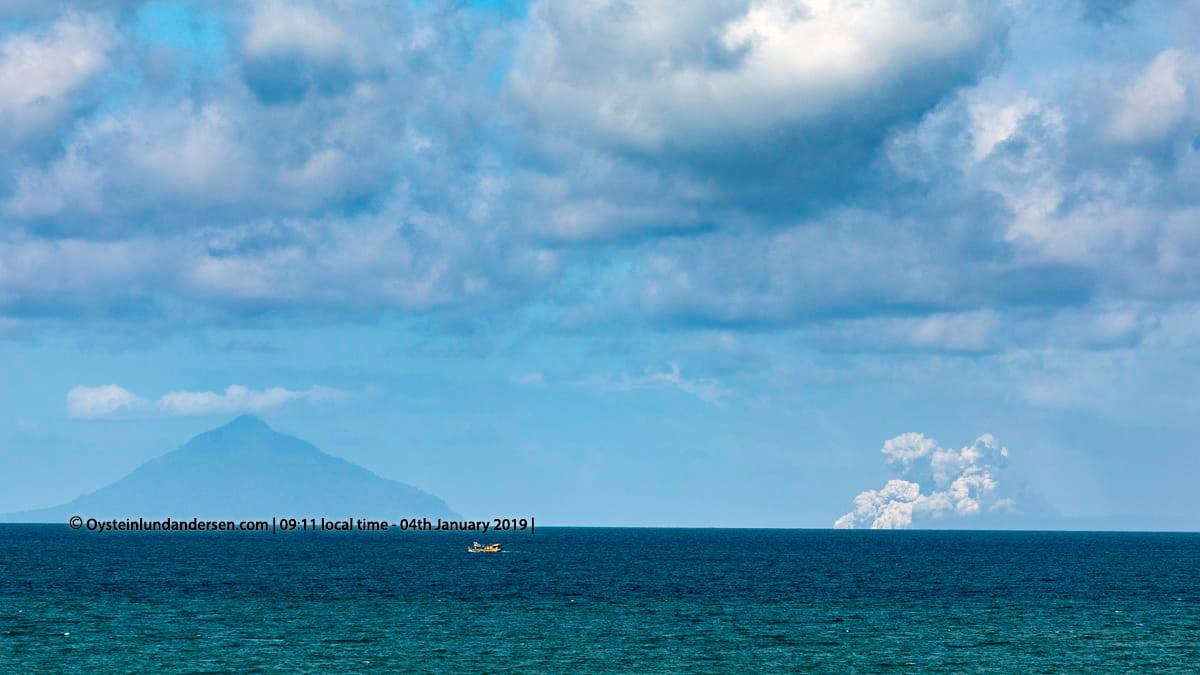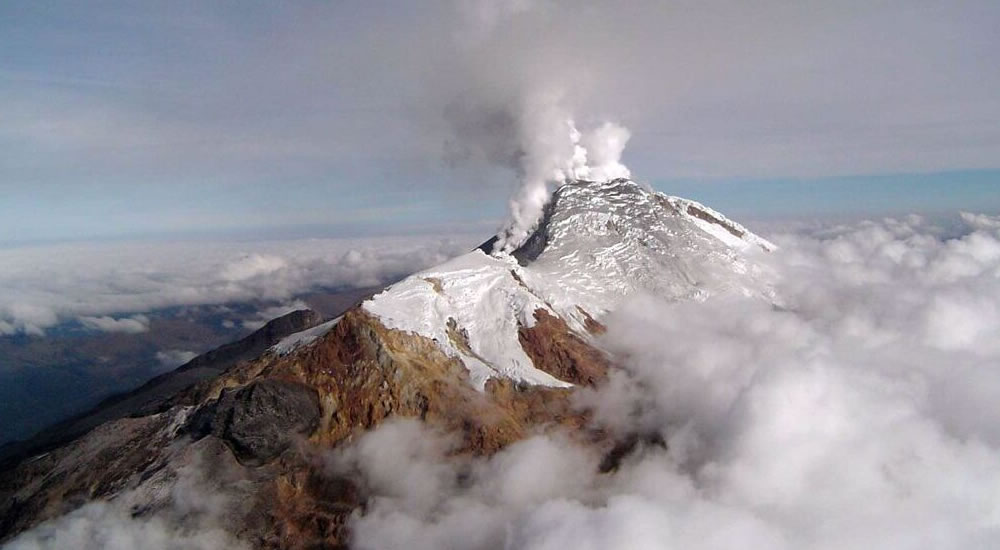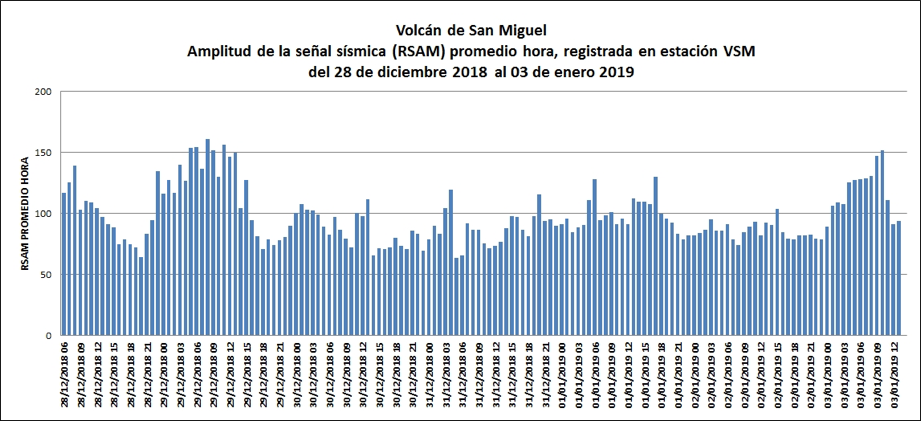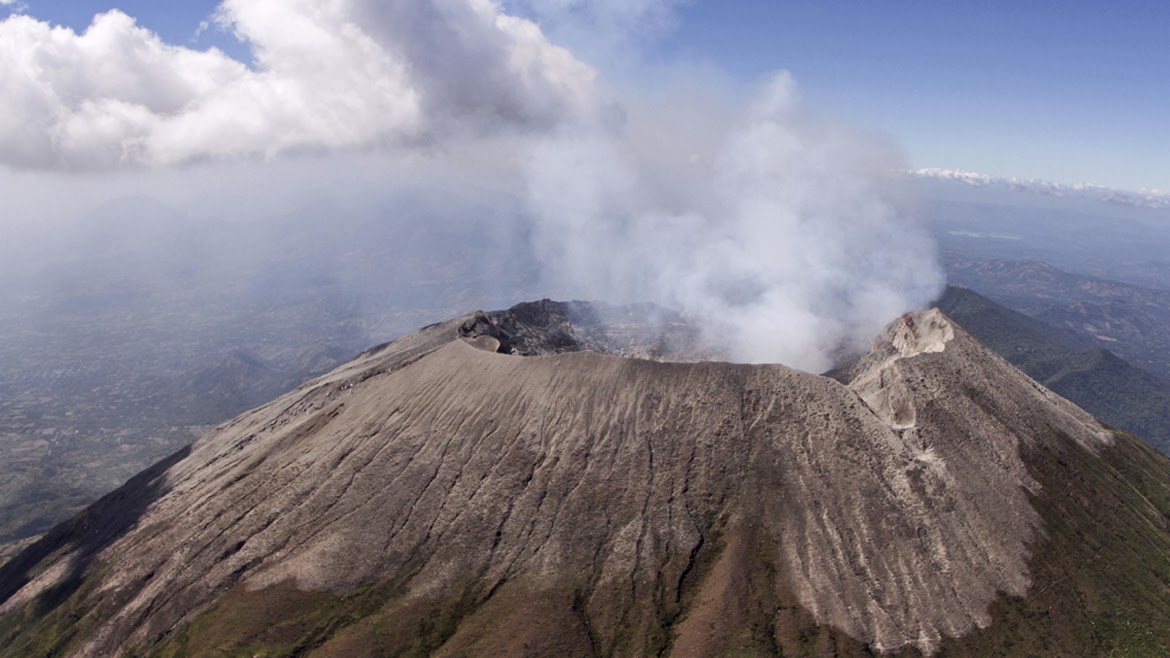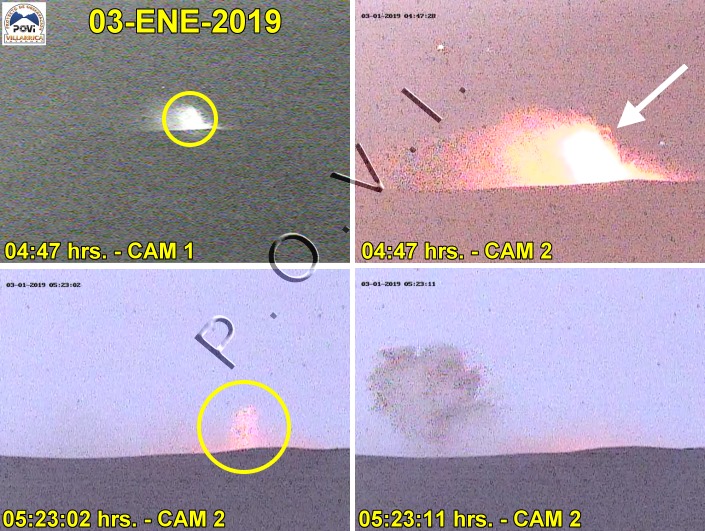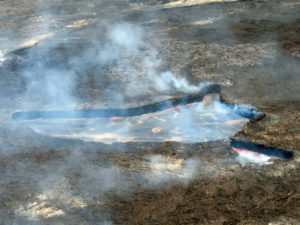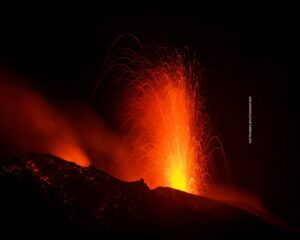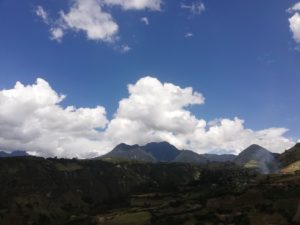January 4 , 2019.
Indonesia , Anak Krakatau :
Eruption of Mount Anak Krakatau, Lampung, on 3 January 2019 at 12:03, with a height of ash column observed at ± 1,600 m above the summit (± 1,710 m above sea level) . The column of ash was black and thick in intensity, inclined to the north and north-east. This eruption is recorded on a seismogram of maximum amplitude of 31 mm and a duration of ± 1 minute 10 seconds. At present, the Anak Krakatau is at level III (SIAGA) with recommendations: people / tourists are not allowed to approach within a radius of 5 km around the crater
Anak Krakatau – 02.01.2019 – photo Planet Labs Inc. via BBC.
VOLCANO OBSERVATORY NOTICE FOR AVIATION – VONA.
Issued: January 04 , 2019
Volcano: Anak Krakatau (262000)
Current Aviation Colour Code: ORANGE
Previous Aviation Colour Code: orange
Source: Anak Krakatau Volcano Observatory
Notice Number: 2019KRA05
Volcano Location: S 06 deg 06 min 07 sec E 105 deg 25 min 23 sec
Area: Lampung, Indonesia
Summit Elevation: 352 FT (110 M)
Volcanic Activity Summary:
Eruption with volcanic ash cloud at 05h30 UTC (12h30 local). Eruption and ash emission is continuing.
Volcanic Cloud Height:
Best estimate of ash-cloud top is around 5152 FT (1610 M) above sea level, may be higher than what can be observed clearly. Source of height data: ground observer.
Other Volcanic Cloud Information:
Ash-cloud moving to north-northeast.
Remarks:
Eruption recorded on seismogram with maximum amplitude 21 mm and maximum duration 161 second.
Source : PVMBG , Magma Indonésia.
Photos : Planet Labs Inc. via BBC. Øystein Lund Andersen.
Colombia , Nevado del Huila :
Weekly activity bulletin of Nevado del Huila
The level of activity of the volcano continues at the level: yellow activity level or (III): changes in the behavior of volcanic activity.
Based on the analysis and evaluation of the information obtained through the monitoring network of the Nevado del Huila volcano, from 25 to 31 December 2018, the COLOMBIAN GEOLOGICAL SERVICE – Volayan Volatological and Seismological Observatory states that:
• During the evaluated period, 101 seismic events were recorded, 45 related to rock fracturing processes (type VT) and 56 related to fluid dynamics in volcanic canals. Of these, 51 were classified as long period events (LP type), two (2) as hybrids (HB type) and three (3) as low energy tremor pulses (TR type).
• The images obtained during the week by the web cameras of Caloto, Tafxnú, Maravillas and La Palma showed a weak degassing of the volcanic system.
• Sensors for monitoring soil deformation, magnetic fields, and infrasound did not record any variations associated with changes in volcanic activity.
Therefore, it is concluded that the volcano exhibited stable behavior during the evaluated period. The Colombian geological service is attentive to the evolution of the volcanic phenomenon and will inform in due time any changes that may occur.
Source : SGC
El Salvador , San Miguel ( Chaparrastique ) :
Special Report 3. The fumarole activity continues on the Chaparrastic volcano and emissions of fine materials are reported.
The degassing of the crater of the Chaparrastique volcano persists (figure 1), associated with the processes of pressurization of the gases of the volcanic system. Small changes in the amplitude of the seismic signal result in the emission of fine particles of ash.
Members of the local observers network (ROL) in the region reported this morning an increase in the degassing of the volcano and a drop of fine material in Conacastal Township, located northwest of the crater. There is no report of damage to people.
Figure 1. Degassing of the volcano in the southwest direction. Local observers reported a fall of fine material in the area of Conacastal Township 3.5 km northwest of the crater.
The recording of the seismic signal at the stations of San Miguel Volcano (VSM) and Ranchito shows changes in the shape and amplitude of the trace from 19:00, Tuesday 2 January 2019.
At 8:00 am on January 3, it was suddenly observed that the seismic amplitude in the VSM station is decreasing, while it is increasing in the Ranchito station. At this time, the local observers network reports the fall of fine materials in the region. of the canton. These facts allow us to interpret the possible appearance of gas from the internal system of the volcano, during the cleaning of the duct in the region of the central crater (Figure 2).
Figure 2. Seismicity record. On the left by the VSM station, right registration by the Ranchito station. Note the change in signal amplitude in both stations.
In the last 24 hours, the values of the seismic vibration (RSAM) of the volcano remained fluctuating between 78.60 and 151.67 96 units, with an hourly mean of 103.33 units, values considered slightly abnormal. (Figure 3).
Figure 3. Behavior of seismic vibrations recorded during the last seven days.
The volcanologists of the MARN left this morning in the region of the volcano to check the fall of the ashes and carry out gas measurements with the station DOAS MOVIL.
Due to the current situation of the activity of the volcano, degassing demonstrated in recent days could be maintained, which could be accompanied by emissions of fine materials that would be transported in the direction of the prevailing wind and reach other areas inhabited between the south and west side of the volcano, with a smell of sulfur in the region between El Carreto and Piedra Azul.
In case of increased activity, the most likely scenario is the generation of an eruptive column whose ashes could fall in the municipalities of San Rafael Oriente, San Jorge and Chinameca. The production of ballistic projectiles is not excluded in this scenario, up to three kilometers around the crater. However, the possible production of lava flows from the flanks of the volcano is less likely to exist.
The ministry calls on the general public not to approach the upper part of the volcano, because of the danger it represents. And he asks residents of the region to remain attentive to information provided by official means and to avoid making use of rumors from unofficial sources.
The next update will take place on Monday, January 7, 2019. In the event of a material change, an advance special report will be published.
Source : Marn .
Photos : Marn ,EPA .
Chile , Villarica :
Volcano Villarrica, Thursday, January 3rd.
After a break period of 5 weeks, strombolian explosions resume this morning. The lava fountains are projected about 30 meters high on the edges of the crater. There are falls of pyroclasts east of the volcano.
On December 25, we implemented a new technology (POVI 2.0) to capture sequential images of the Villarrica volcano. Between 2005 and 2018, 8,800 daily photos were captured per camera (one image every 10 seconds). In 2019, there were 86,400 photos per day per camera (1 image per second).
This important innovation allows us to observe and study volcanic phenomena with an unprecedented level of detail.
The POVI project thanks the collaborating partners of Fundación Volcanes de Chile who, thanks to their financial contributions, made this deployment possible..
Source : Werner Keller / POVI.
Mexico , Popocatepetl :
January 3rd at 11:00 am (January 3rd at 17:00 GMT).
During the past 24 hours, 140 exhalations have been identified using the monitoring systems of the Popocatépetl volcano, accompanied by water vapor, gas and sometimes small amounts of ash. In addition, three volcano-tectonic earthquakes were recorded: the first recorded yesterday at 19:34 and the two remaining recorded today at 03:01 and 04:06; the calculated magnitude is 1.7, 2.1 and 1.6, respectively.
At the time of writing this report, the continuous emission of volcanic gases dispersed in a north-northeast direction observed.
CENAPRED urges DO NOT APPROACH the volcano and especially the crater, because of the risk of falling ballistic fragments, and in case of heavy rains to move away from the bottom of the ravines because of the risk of landslides and flows mud.
The Volcanic Warning Light of Popocatepetl is located at Amarillo Phase 2.
Source : Cenapred .
Photo : W radio

